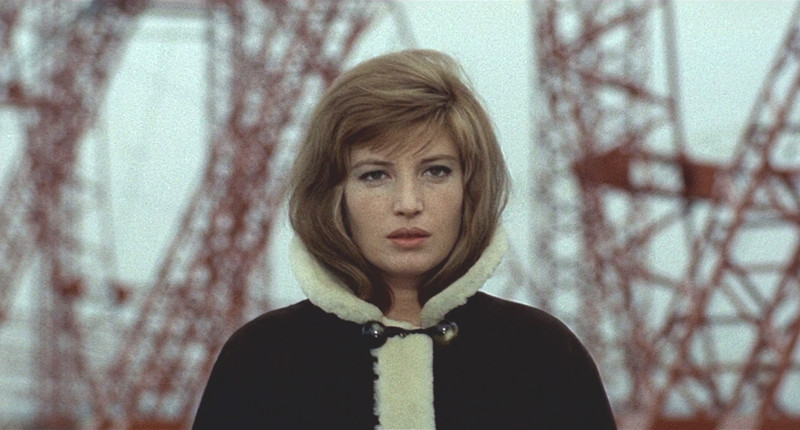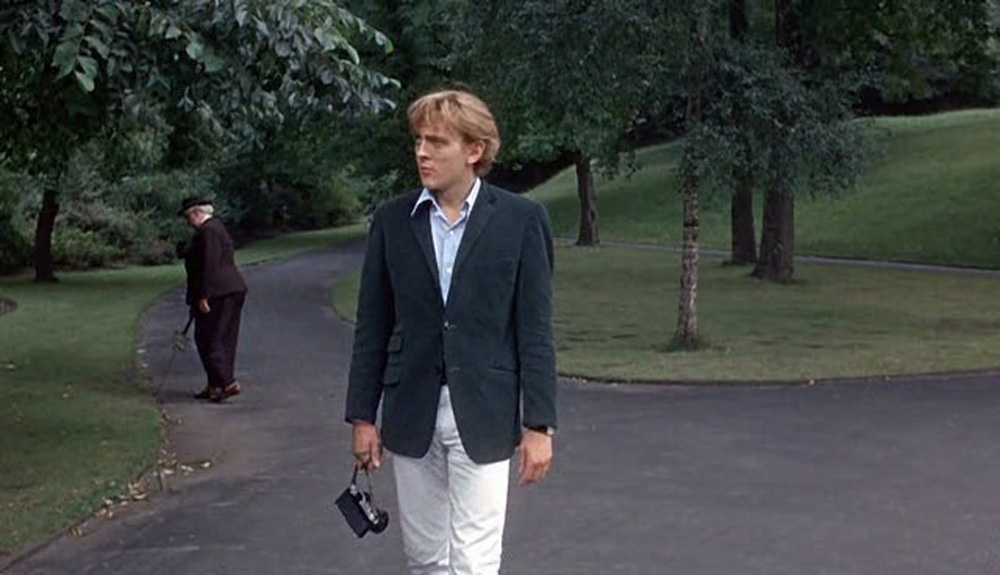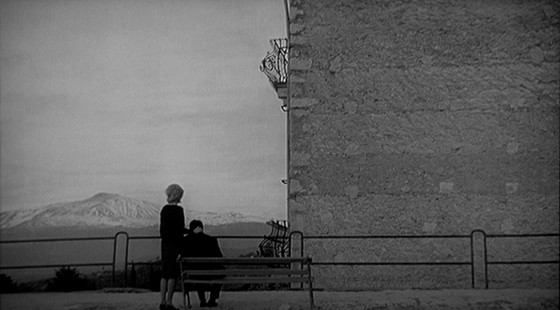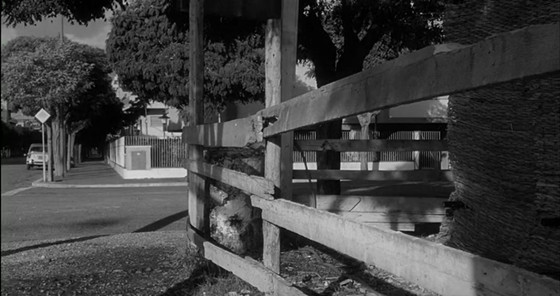Not only in his time but in present day, Michelangelo Antonioni’s style of narration is considered unique and inimitable. There is something about his films that make all the different narrative spaces of his stories recognizable, regardless the language the characters are speaking or the landscapes they are roaming.
Whoever the actor, whether it’s Jack Nicholson, Marcello Mastroianni or David Hemmings, you’ll know that the film you’re watching belongs to this great filmmaker, and you’ll recognize his voice through these actors’ words. What comes below lists only some of the most noted visual and sonorous elements of his cinema.
Being familiar with architecture, Antonioni has mostly represented the architectural concepts through cinematography, so most of the elements mentioned in this text are actually mirroring back this very notion; the mentioned narratives are utterly based on the idea of unifying the character and the surrounding ambiance. In Antonioni’s cinema, dramatic development of the story and the character’s treatment both take form through placing the character in a specific landscape.
As always, if you think you can add to this list, don’t hesitate to recommend additions.
1. Dominant narrative ambient
The most significant choice in Antonioni’s narratives is initially choosing the right landscape. Specifying ambient details such as where, when and why the story is happening assists the story’s development. The answers to these questions can be explained in the case of “Blow Up” (1966).
The story takes place in London. There’s a vast range of urban, industrial landscapes to choose from, and that very fact that can also assist in giving a sense of rationality to the character and the city. The colors are flatter, the light you can get in London (while it’s not raining of course) is perfect for the kind of photography the character (and consequently Antonioni himself) uses, which is fashion photography.
It is objective photographic documentation in some cases and this is the exact mode of visual and sonorous treatment Antonioni chooses to approach his characters and their stories. By just by choosing London as your location, what you get is flat, low contrasted light and urban rationality. The story takes place in the 60s and no other city but London can mirror the social situation of this period of time.
The choice of the main location for a cinematic story is maybe the most crucial one for the filmmaker, for this very element is the most basic reference to the world we’re living in. By relying on what the audience actually knows or has heard from London, the filmmaker ushers the audience into the narrative. This is the same very narrative role of the island in “L’avventura” (1960), the urban suburb life in “L’eclisse” (1962), and the Grand Canyon in “Zabriskie Point” (1970).
2. Alienation
Isolation of the character is a repetitive concept in Antonioni’s cinema. His characters are hard to sympathize with, as they do not represent a majority. Antonioni’s main characters are loners, standing outside of social norms such as family or friendship. These protagonists, even if they have a family, friend or lover, may be on the verge of losing them.
“La Notte” is the story of a couple whose love is long lost. “L’eclisse” is about a couple who find each other and seem to be perfect for one another, and they leave each other in a hopeful state, promising an appointment for the same afternoon; however, they never attend the date. The protagonist of “Blow Up” finds his wife in bed with his friend.
Monica Vitti in “L’avventura” takes the place of her best friend and starts a relationship with her boyfriend, while in “The Passenger”, the protagonist and his wife are simply geographically too far from one another to be considered “a couple”. These loners rarely share their secrets, and the emotions in these stories tend to remain inward.
What Antonioni tries to describe is a tough challenge. There are unspoken words in these films, if there’s an emotion or a feeling or in general a subjectivity that has to come out of the narrative context, the only way to show it is through juxtaposition of the pictures and situation.
If Bresson counted mostly on the succession of images and sounds to recreate a feeling, Antonioni more than anything else has achieved the same aim through creating a narrative ambient, using the architectural surrounding space and moving the recitation of his characters inward.
3. Diegetic music
In almost all of Antonioni’s films, the music has an actual existent source in the location. In “Blow Up”, apart from the initial and final music that accompanies the titles, every other musical score is audible through an existing source on set: a radio, a stereo, or a concert.
Music in his films is only another element to construct the narrative ambiance; it’s not some superior element that commands the audience the feeling that the scene ought to show. The music is just there, not just coming from an outside source.
4. Architectural presence of urban life
The half-finished buildings, tall walls and angles are visually like bricks to Antonioni, material to construct his perfect architectural and photographic composition of every single shot. The idea of using the characters as materials of this whole architectural composition is dominant in Antonioni’s cinema, except that this very element is capable of moving and passing through spaces.
The concept of “abandon” repeats itself in the choice of urban suburbs, an isolated house that oddly has no neighboring house around, or an industrial landscape with deserted alleys where the character has to yell out to see inhabitants. All these spaces reflect the state of mind of the character and form an essential part of the character’s development. In Antonioni’s cinema, the treatment of the character is no different from the treatment of the narrative space.
5. Referring to sound-effects, cinematic soundscape
The use of sound effects in Antonioni’s films is quite different from how Bresson uses sound effects in his cinema. While Bresson utilizes sound effect as a reference to action that is happening out of frame, in Antonioni’s cinema sound as any other expressive element is used to construct a whole narrative ambient and complete the final architectural image.
Once again, we have to remind ourselves of the fact that any movable or motionless, visual or sonorous element in his cinema is severing as a constructive component of a cinematic narration as an architectural representation. The kind of soundscape Antonioni is expecting in London is quite different from the cinematic soundscape he gets from the island in “L’avventura”. Ambient sound is a composition of meaningful detailed existing sound effects in that very location; undoubtedly in any of these locations the unwanted element has been eliminated.
The park ambiance in “Blow Up” is simply the sound of wind blowing through a mass of trees, there is no doubt that in that park (specially a park located within a city) one can hear lots of other ambient sonorous elements, but the sound of a mass of trees moving in the wind gives a rustling hum that assists again in isolating the character and the narrative space from its surrounding ambiance. Specifically, one can note the fact that the park is the most significant ambient in the whole narration.



